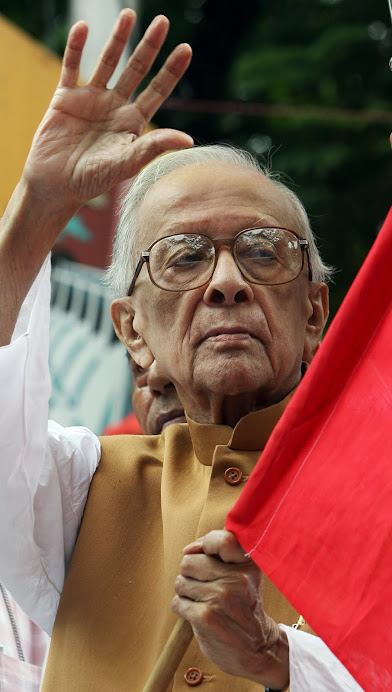Asia
Indonesia: People's Democratic Party relaunched as `open, mass-based cadre party'

Pakistan: Women workers march on International Women's Day

By Bushra Khaliq, general secretary, Women Workers Help Line
Women dying from the Asian `miracle': System change a must to save women’s lives
By Reihana Mohideen
March 8, 2010 -- Despite the fanfare about Asia’s "miracle" economies, the problem of "missing women and girls" is actually growing, according to the United Nations Development Program-sponsored 2010 Asia-Pacific Human Development Report.
These "missing" girls and women are a result of the abortion of girl fetuses and women dying through sheer neglect – underfed and starved and not receiving adequate health care. The birth gender disparity is the highest in East Asia, home of the Asian "miracle" economies, where 119 boys are born for every 100 girls. China and India, much touted for their economic success, account for 85 million of these 100 million "missing" women.
Asia-Pacific calls for protests during Obama's visits to Guam, Indonesia and Australia

Statement by the Working Peoples Association (Indonesia), People's Democratic Party (Indonesia), Socialist Alliance (Australia), Socialist Worker (New Zealand), Partido Lakas ng Masa (Philippines), Solidarity (Australia), Labour Party Pakistan, Socialist Alternative (Australia), Socialist Party of Malaysia and the Confederation Congress of Indonesia Union Alliance. Supported by James Petras
[If your organisation would like to add their names to the statement, please email international@prp-indonesia.org.]
March 8, 2010 -- We, the undersigned progressive, anti-war, anti-neoliberalism and anti-imperialist organisations in the Asia-Pacific region, call for a wave protests to meet US President Barack Obama's planned visits to Guam, Indonesia and Australia in March 2010.
Malaysian socialists lead protests against full-paying patient scheme
March 1, 2010 -- Malaysiakini -- The Malaysian government’s full-paying patient (FPP) scheme has again come under fire from the Coalition Against Health Service Privatisation, which held simultaneous pickets outside four public hospitals nationwide.
 In the Klang Valley, short pickets by small groups were held at the Serdang and Sungai Buloh hospitals.
In the Klang Valley, short pickets by small groups were held at the Serdang and Sungai Buloh hospitals.
A similar protest took place outside the Hospital Sultanah Bahiyah Alor Setar, Kedah, and Hospital Sultan Ismail, Pandan, Johor.
At the Sungai Buloh hospital, Kota Damansara assemblyperson Dr Mohd Nasir Hasim, from the Socialist Party of Malaysia (PSM, Parti Sosialis Malaysia), led about a dozen people in denouncing the scheme which the government had initiated in 2007.
According to Nasir, the FPP scheme pilot project in Hospital Selayang has proven detrimental to both doctors and patients.
Thailand: Seize it all! The palaces, the shares, the diamonds, all the ill-gotten gains!
By Giles Ji Ungpakorn
March 1, 2010 -- I don’t shed any tears about former Thailand Prime Minister Thaksin Shinawatra’s billions being seized by order of the Thai Supreme Court on February 26. I advocate that the billions of ill-gotten gains in the hands of the entire Thai rich: the politicians in this government, the generals, the businessmen and businesswomen, and of course the entire royal family and all their hangers-on, should be seized in the future. The rich do not have the right to accumulate wealth on the backs of the majority of hard-working Thais.
No public figures, including the king and the generals, or politicians, should hold shares or have special interests in business. This always leads to corruption. Just think about the corrupt benefits which the politicians around former US President George Bush enjoyed as a result of the illegal war in Iraq.
India: The legacy of Jyoti Basu

By Dipankar Bhattachary
Malaysia: Two-party system – and a ‘third force’?

By Jeyakumar Devaraj
February 11, 2010 -- Aliran Monthly -- Malaysia has only known one ruling coalition in the past 52 years since independence. But the result of the March 2008 election has led to rising hope among many Malaysians that an enormous change might be around the corner – a two-party system under which the people are free to choose between two coalitions, which are both capable of governing the country.
The purpose of this paper is to locate the institution of a two-coalition system against a wider historical perspective.
The concept that every person has an equal right to select the government irrespective of his or her social status, wealth, education, religious affiliation or beliefs is a revolutionary idea. And it is relatively new.
LPP fifth congress: Bravura expression of growing left influence in Pakistan

By Farooq Tariq
February 8, 2010 -- The two-day Labour Party Pakistan fifth congress [held on on January 27-28] helped to advance the revolutionary process in Pakistan. It brought together comrades from different traditions and trends to discuss the central topic: “Building a mass working-class party independent of the influence of the capitalists and feudal elements.” The congress was a bravura expression of the growing influence and strength of emerging left-wing politics in Pakistan.
More than 140 delegates and observers representing 7263 members of the LPP discussed the political and organisational aspects of the party. For the first time in the LPP’s 13-year history, delegates representing Sindh, Punjab, Baluchistan, Gilgit Baltistan, Sareiki Waseeb, Pukhtoonkhawa and Kashmir attended. There were leaders of trade unions, of social movements, of peasants and from the labour movement -- all eager to learn from each other and discuss their future course of action.
Who is really avoiding justice in Thailand?
February 6, 2010, is the first anniversary of the day I had to leave Thailand and seek political exile in Britain.
No detention of asylum seekers in Indonesia and Australia!
Stop criminalisation of activists!
Reject the “Indonesian Solution”!
Free the refugees!
No detention of asylum seekers in Indonesia and Australia!
SBY-Budiono regime is an Australian puppet!
By Central Committee, Working Peoples Association (KP-PRP)